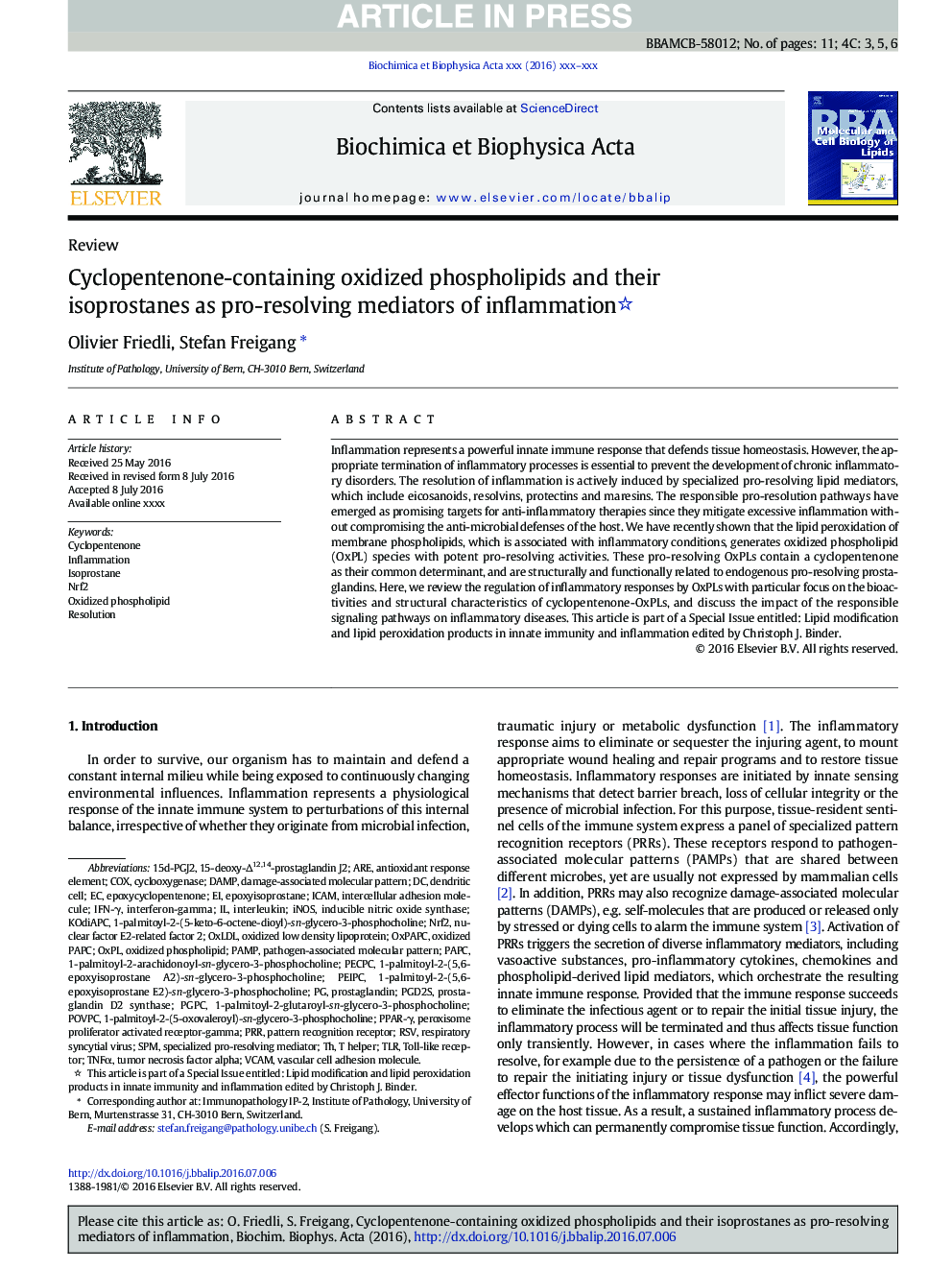| Article ID | Journal | Published Year | Pages | File Type |
|---|---|---|---|---|
| 5508501 | Biochimica et Biophysica Acta (BBA) - Molecular and Cell Biology of Lipids | 2017 | 11 Pages |
Abstract
Inflammation represents a powerful innate immune response that defends tissue homeostasis. However, the appropriate termination of inflammatory processes is essential to prevent the development of chronic inflammatory disorders. The resolution of inflammation is actively induced by specialized pro-resolving lipid mediators, which include eicosanoids, resolvins, protectins and maresins. The responsible pro-resolution pathways have emerged as promising targets for anti-inflammatory therapies since they mitigate excessive inflammation without compromising the anti-microbial defenses of the host. We have recently shown that the lipid peroxidation of membrane phospholipids, which is associated with inflammatory conditions, generates oxidized phospholipid (OxPL) species with potent pro-resolving activities. These pro-resolving OxPLs contain a cyclopentenone as their common determinant, and are structurally and functionally related to endogenous pro-resolving prostaglandins. Here, we review the regulation of inflammatory responses by OxPLs with particular focus on the bioactivities and structural characteristics of cyclopentenone-OxPLs, and discuss the impact of the responsible signaling pathways on inflammatory diseases. This article is part of a Special Issue entitled: Lipid modification and lipid peroxidation products in innate immunity and inflammation edited by Christoph J. Binder.
Keywords
oxLDLPAMPTLRPRRRSVICAMVCAM15d-PGJ2T helperTNFαOxPLperoxisome proliferator activated receptor-gammaOxPAPCPOVPCCyclopentenonespecialized pro-resolving mediator1-palmitoyl-2-arachidonoyl-sn-glycero-3-phosphocholinePGPCDAMPPPAR-γCOXNrf2IFN-γiNOSSPM15-deoxy-Δ12,14-Prostaglandin J2PAPccyclooxygenaseinflammationdamage-associated molecular patternpathogen-associated molecular patternisoprostaneinterferon-gammainterleukintumor necrosis factor alphaToll-like receptorDendritic cellinducible nitric oxide synthasenuclear factor E2-related factor 2antioxidant response elementOxidized phospholipidoxidized low density lipoproteinintercellular adhesion moleculevascular cell adhesion moleculeAREResolutionRespiratory syncytial virusProstaglandin D2 synthaseprostaglandinPRR, Pattern recognition receptor
Related Topics
Life Sciences
Biochemistry, Genetics and Molecular Biology
Biochemistry
Authors
Olivier Friedli, Stefan Freigang,
